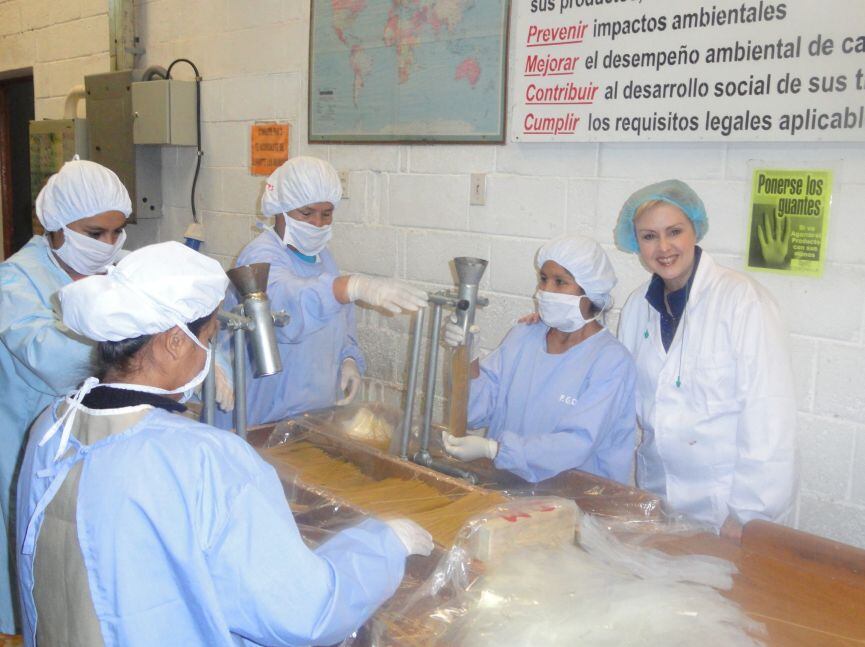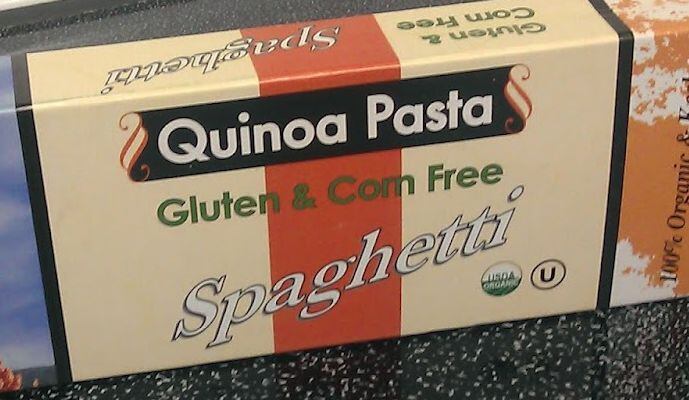Royal quinoa - the variety NASA was most interested in - certainly ticks every nutritional box.
It’s an edible seed (of the ‘ancient’ and gluten-free variety) that’s so nutrient-dense (packed with protein, fiber, calcium, phosphorus, magnesium and iron) that it’s the ultimate space food - as well as a trendy addition the pantries of celiacs and health-conscious foodies alike.

But back in 2005, when LA-based music industry executive Ingrid Hirstin Lazcano started working on a PR campaign for a research scientist impressed by quinoa's nutritional punch, it was unknown to many Americans.
You could buy packs of it in wholefood stores, but you didn’t see it on the ingredients lists of many packaged food products, says Lazcano, who sensed a business opportunity and started to play around with samples in her kitchen.
The Whole Foods Market buyer said yes, and the next thing I knew, I was in the quinoa industry

With a connection to quinoa growing country Bolivia via her husband Fernando Lazcano Dunn (then serving as Consul General of Bolivia in LA), Lazcano bought a plane ticket and started putting her business plan into action.
First, she struck a deal with Bolivia’s largest exporter of organic royal quinoa (which is grown around a salt lake at high altitude and has unusually high levels of protein and minerals), to secure her raw material.
Next, in summer 2006, she signed up a Bolivian cookie manufacturer to produce quinoa cookies under the Andean Dream brand using royal quinoa.
Weeks later, a buyer for the south pacific region of Whole Foods Market liked what he saw, and by October, Andean Dream products were gracing shelves across the west coast of the US.
“It all happened so fast”, recalls Lazcano. “I met with the buyer, he wanted the products in all the stores in the region, and the next thing I knew, I was in the quinoa industry.”
Corn - which is also gluten-free and used in a lot of pastas - is $400 a ton. Royal quinoa is $3,800

Soon, the cookies were appearing in natural food stores all over the country, and were followed in 2008 by pasta and in 2012 by soup mixes. And demand continues to grow strongly, despite the hefty price tag attached to many of her products (royal quinoa is not cheap), says Lazcano.
“Corn - which is also gluten-free and used in a lot of pastas - is $400 a ton. Royal quinoa is $3,800. We also have a dedicated gluten-free facility and Fairtrade certification, so all that costs money. However, quinoa is non-GMO, high in protein and high in nutrients, and people are prepared to pay for it.”
But can ordinary people in Bolivia afford to buy quinoa anymore as demand from wealthy overseas markets pushes up prices - something UK journalist Joanna Blythman recently described as the ‘unpalatable truth’ about quinoa in a provocative article for The Guardian newspaper?

Yes, insists Lazcano, who says she found the article frustrating given that her company is providing jobs for people in Bolivia - where the products are manufactured - and that products such as Andean Dream Cookies were never designed for the domestic market.
Meanwhile, local people have been given land by the Bolivian government where they can grow their own quinoa, she claims (although recent press reports suggest that prices of packaged quinoa and quinoa products in Bolivian stores have risen sharply in recent months).
Our timing was just right
So what’s next? New products - although she’s keeping her cards close to her chest on this front - and new channels to market, says Lazcano, who has been approached by lots of chefs wanting to use her quinoa pasta and spaghetti in their restaurants.
“We were very lucky to be going to market just as quinoa was starting to be on the radar of retail buyers. Our timing was just right.”
